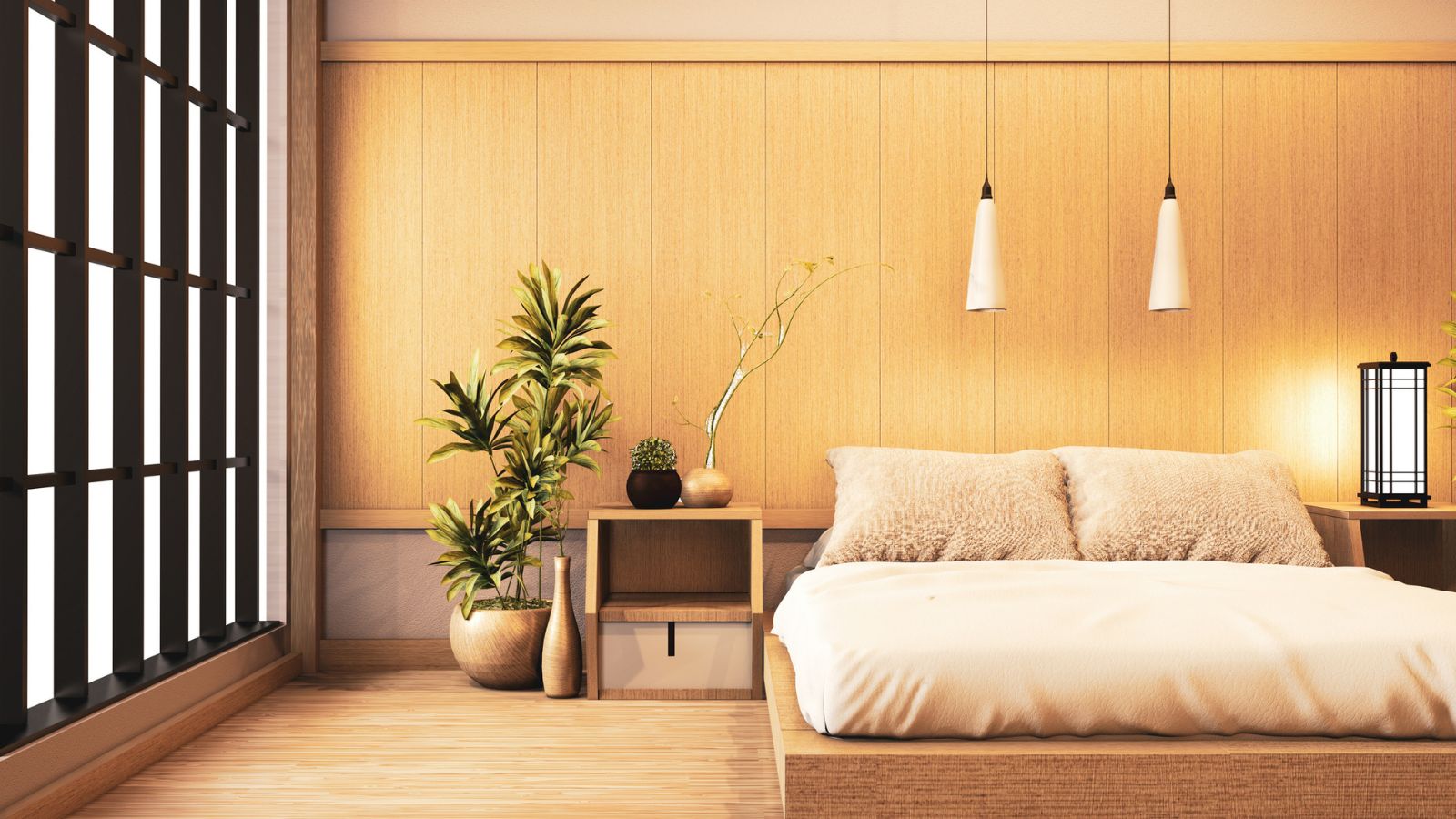
Your bed frame is the bedrock of a good night's sleep. But there's no such thing as the best bed frame − only the bed frame that best suits your style preference and sleep needs. If you're into minimalism, and you like to sleep on your front, you might appreciate a Japanese bed frame.
These sleek, chic frames tend to lie close to the ground to save space. They're designed to fit the low ceilings and small floors of traditional Japanese homes, but they could also work well in studio apartments and even dorm rooms. Made from real wood and constructed with clean lines and tapered legs, a Japanese bed frame should blend beautifully into any bedroom design.
As a shopping writer, I know all the bed frame types to suit every space. And, as a sleep editor, I know which are the best bed frames to support different sorts of sleepers. I've spent hours searching the web to find the best Japanese bed frames that look good, and feel good, too.
It's important to note at the outset that a Japanese bed frame won't be the best fit for every bedroom and might feel too firm for back and side sleepers. That's why I've rounded up a few alternatives so that you can take stock of your options and find the frame that fits you.
Buy it if: you want a bed that's built to last

While you can find fine finishes and expert woodwork in all kinds of bed frames, if you know where to look, there's something special about the best Japanese bed frames. There's no fuss or frills: just careful sanding and clever joinery.
These frames are made from real wood that can easily withstand heavier weights. Your bed frame isn't only supporting you, but your mattress, too, as well as your sheets, pillows, and any extra bedding, so it needs to be made from sturdy materials. When you're shopping for a Japanese bed frame, keep an eye out for hard woods, such as oak, walnut, and mahogany.
Each piece of this solid wood frame is connected by slats, which flex to bear your weight and boost your mattress. There's no need to buy a box spring or a bed skirt. The best Japanese bed frame should provide all the support you need.
Buy it if: you like to sleep on a firm surface
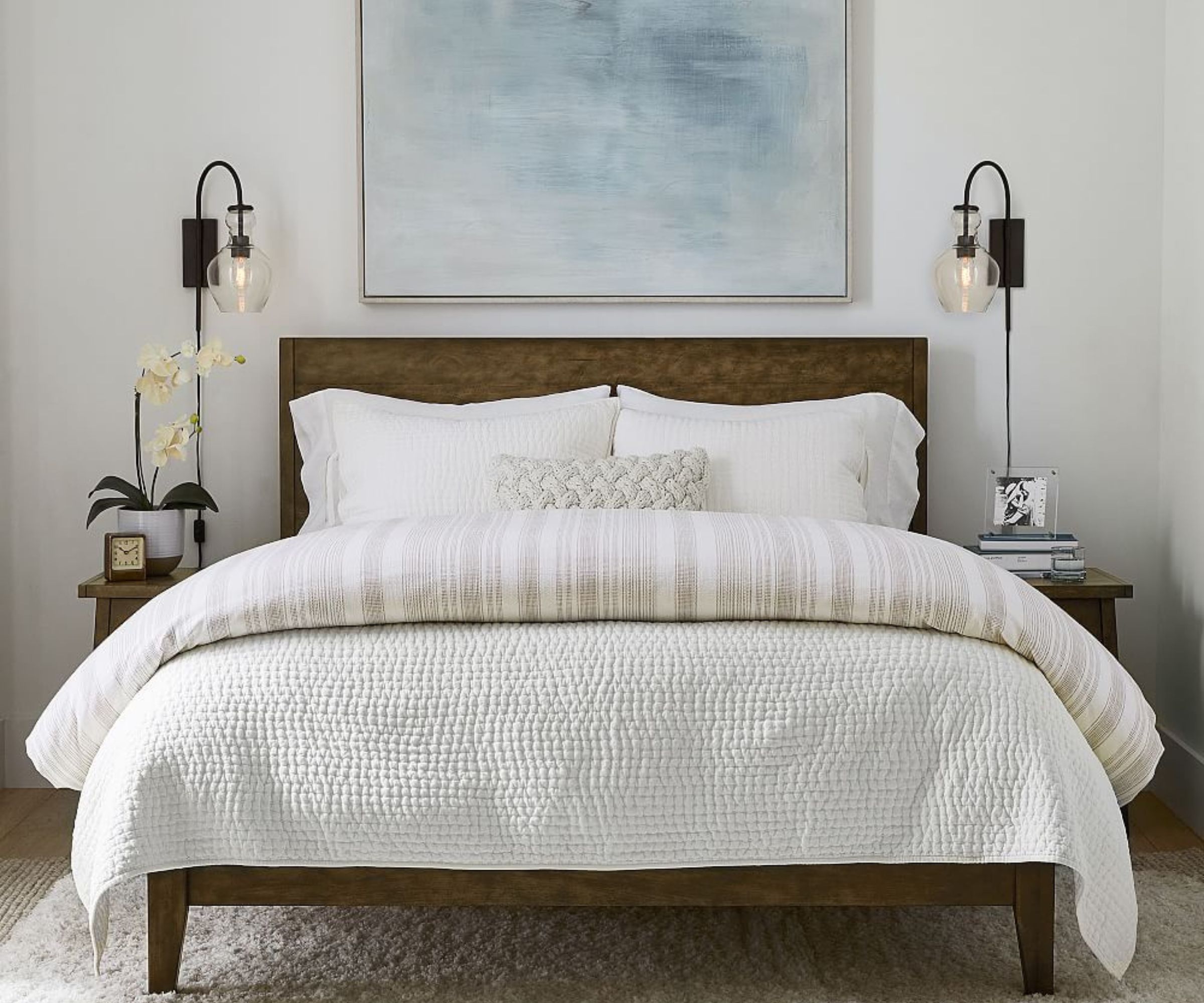
What sort of bed you like to sleep on is partly a question of personal preference, but mostly a matter of sleep style. Whether you lie on your front, back, or sides will dictate what happens to your body while you sleep and indicate what sort of frame could best support you.
I would recommend a Japanese bed frame to front sleepers, first and foremost. If you sleep on your stomach, you should opt for a firmer frame that can bear your weight and stop you from sinking in. A firm Japanese bed frame could help to lift your hips, lower your spine, and improve your posture. For additional support, you could pair a Japanese bed frame with the best firm mattress.
You might have heard that the best Japanese bed frame could alleviate back pain. That's because a firmer frame helps to maintain the natural alignment of your spine. A softer frame will flex further, lowering your mattress and allowing your body to sink in. That might be good for back and side sleepers, who need a mattress with a little give, but it's less than ideal for stomach sleepers.
These are a few of my favorite Japanese bed frames. Their broad bases and tapered legs provide a supportive, firm surface.
This low-slung bed frame features an extended platform that you can use to display and store your bedside essentials, from your phone charger to your bedtime book.
You can customize this sleek, chic frame to get the sleep experience that suits you. Shop it with or without a headboard, in shades of natural, espresso, gray, and walnut wood.
With its walnut wood veneer and trim and tapered legs, this bed is the stuff that mid-century modern dreams are made of. It comes with built-in slats, so there's no need for a box spring.
Buy it if: you're a minimalist
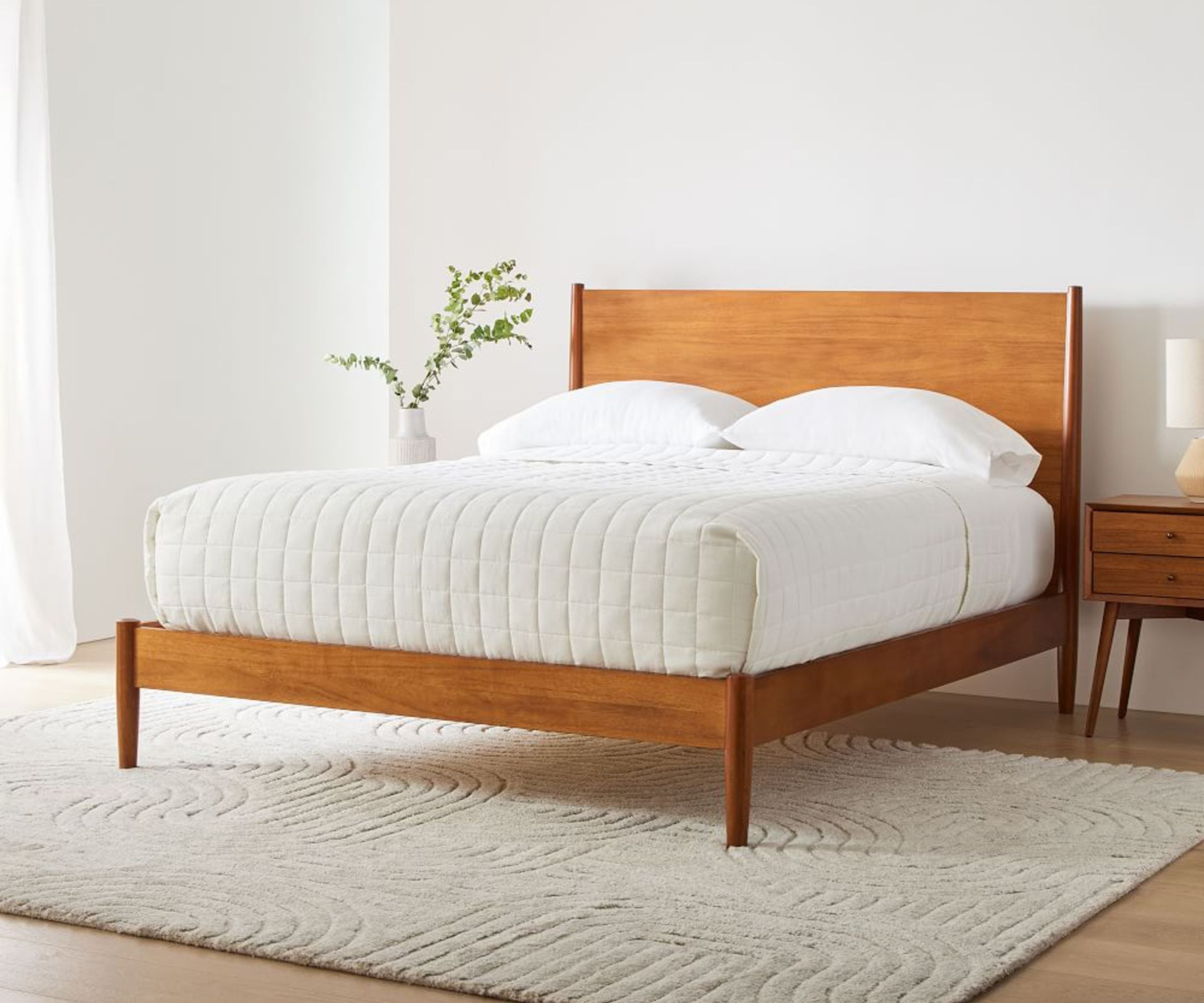
With their clean lines and neat corners, Japanese bed frames are made to blend into the background. Each frame is simply constructed and made from real wood in natural shades to complement any color palette.
When you take away bright hues and plush padding, which have no place in a Japanese bed frame, you're left with organic materials in all their glory. These frames center and celebrate the knots and grains of real wood. From piece to piece, there will be subtle variations in color and texture that create a bespoke bed frame.
A Japanese bed frame is sufficiently classic to suit all styles of bedroom. With that said, a dark wood frame would pop against plain white walls, while an oak or beech base could fit right into a rustic bedroom.
Buy it if: you want to save space
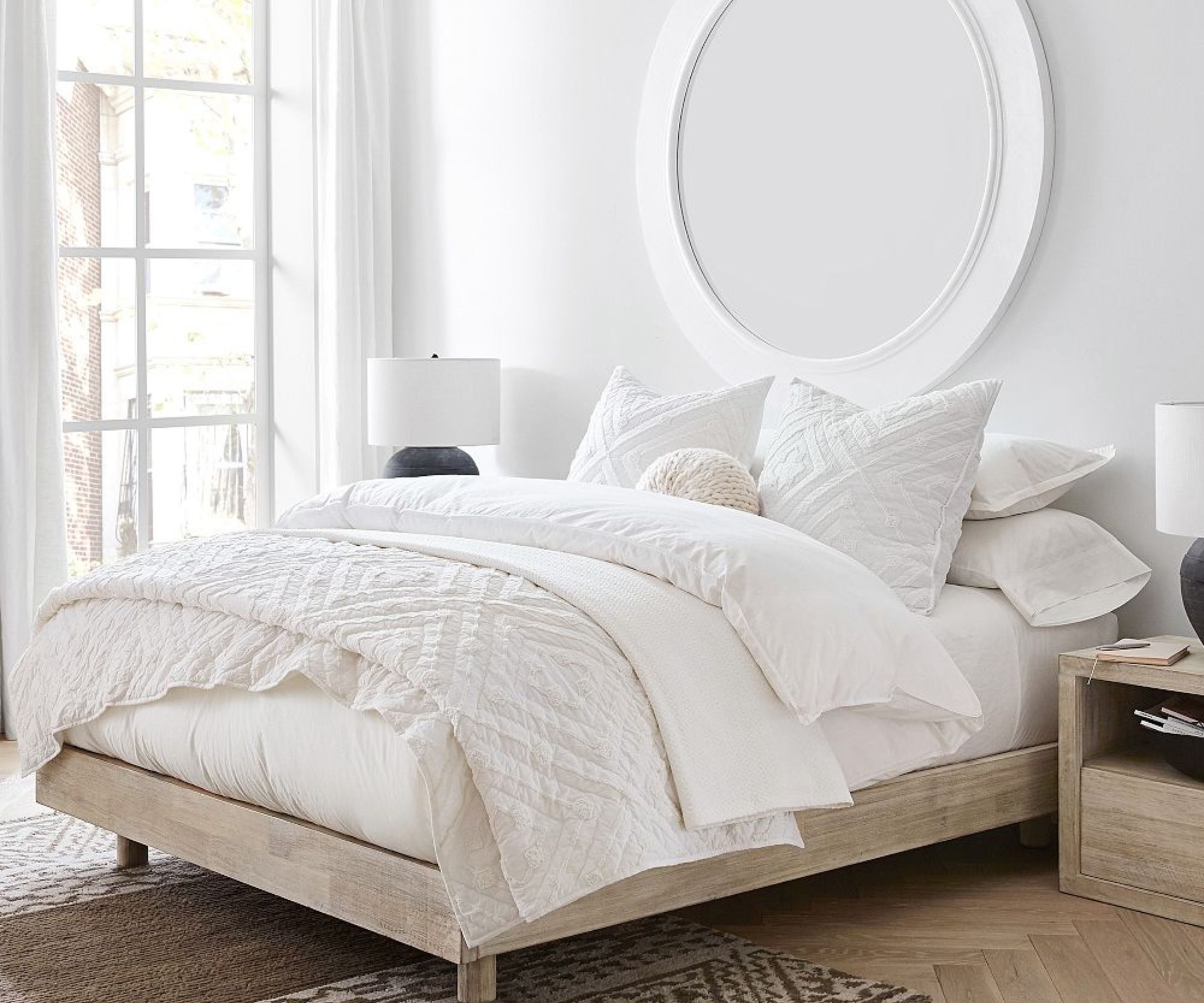
Designed to fit into small spaces under low ceilings, these frames lie close to the ground. The best Japanese bed frames are made to maximize vertical space and make the most of your square footage. If you choose a frame without a headboard, you can set it right up against the wall to save a few more precious inches.
In comparison with a four-poster, which might overwhelm smaller spaces, or a plush platform bed that comes with a padded headboard, a Japanese bed frame affords you so much extra space. You might find room for a dresser, a desk, or a wardrobe that you couldn't have accommodated otherwise.
Below, you'll find a few of the leanest and lowest bed frames money can buy. These frames are streamlined for use in the smallest spaces. You could easily fit each frame through the door of a studio apartment and set it down in a spare bedroom.
Leather straps toughen up this oak wood frame, adding depth and dimension to an otherwise unassuming headboard. Each slat is sealed with clear lacquer to protect the wood.
Since this bed comes without a headboard, you can set it right up against the wall and save some floor space. It's designed to fit into tight corners and narrow nooks.
A high headboard and a low footboard add depth and drama to this Japanese bed frame. Each piece is made from real hardwood to showcase the natural grain and texture of beech.
Don't buy it if: you have mobility issues
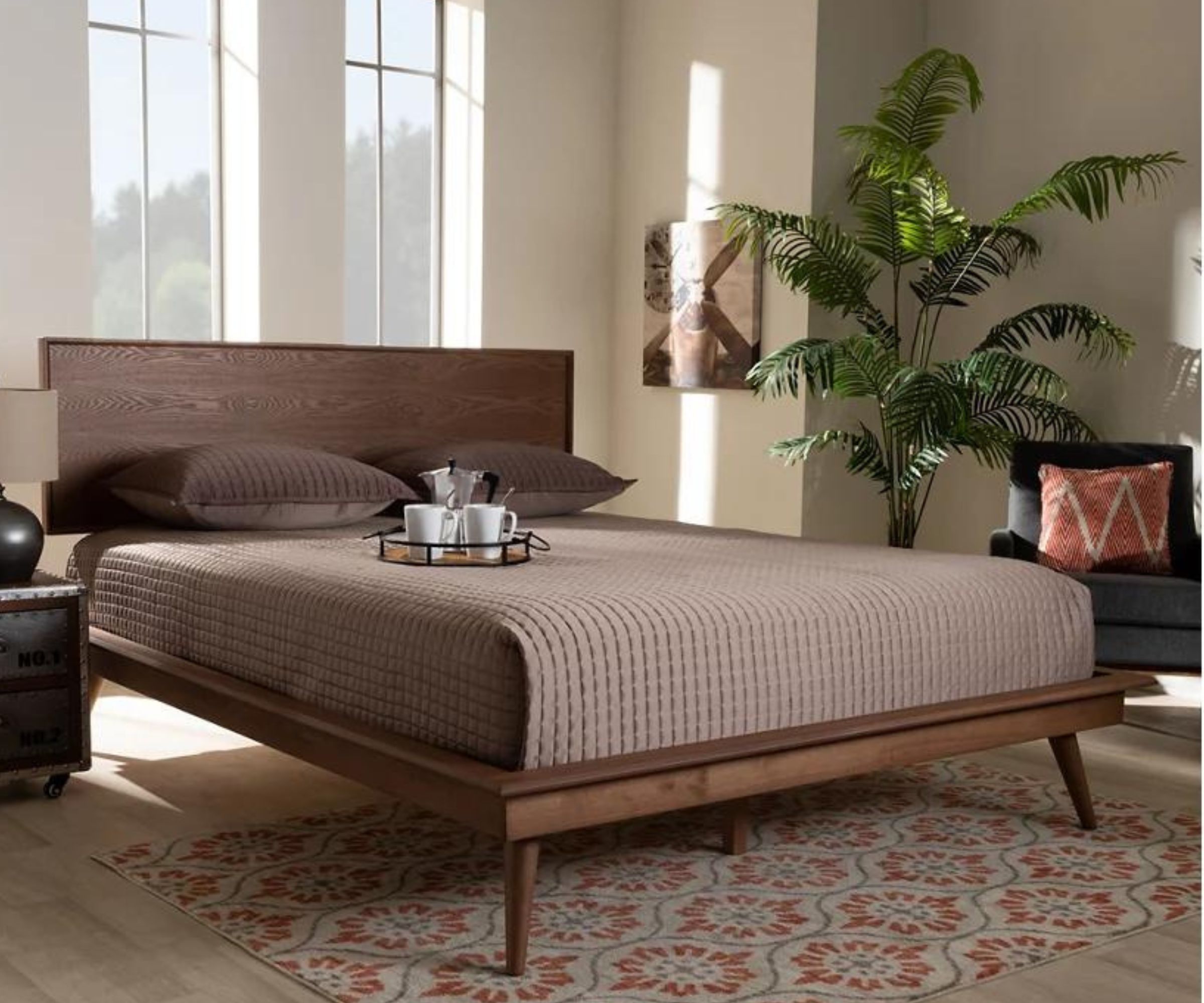
Looking at those last few frames got me thinking: Japanese bed frames lie seriously close to the ground. These beds might suit young and agile sleepers working with smaller spaces, but they might not work for older sleepers, especially those who struggle with mobility.
The trouble with these frames lies in their lowness. You have to bend all the way down to get into bed and stretch all the way up to get out again. All this movement could strain your body, putting pressure on your knees and joints. In the worst possible scenario, your Japanese bed frame might not be able to alleviate back pain. It might be the frame that gives you pain in the first place.
If you like the look of a Japanese bed frame, but you don't want to throw out your back, you might be better off with a higher platform bed, such as the Valencia Bed Frame from Saatva. This frame lies further from the ground, so that you don't have to bend so far or stretch so high to get in and out. It's also completely compatible with adjustable bases, which allow you to set and save your ideal sleep positions.
Don't buy it if: you prefer to sleep on a softer surface
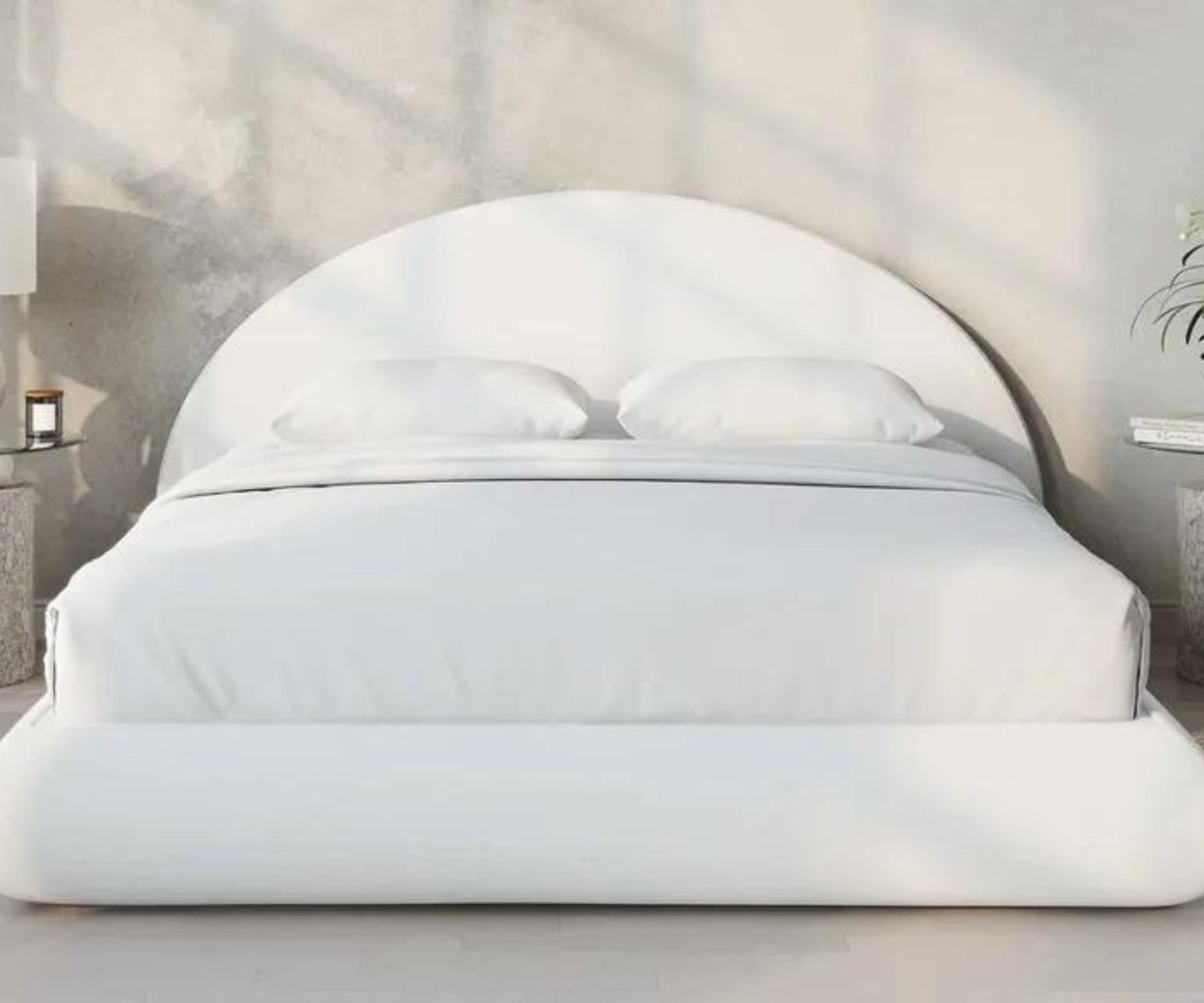
Perhaps you don't take issue with the height of a Japanese bed frame. You might like the look and feel of a bed that lies close to the ground, yet struggle to sleep on such a firm surface. If you're after a softer bed for a deeper sleep, you might feel more comfortable on a cloud bed.
Made from low-slung, hardwood frames and upholstered with plush padding, cloud beds combine the support of a Japanese bed frame with the comfort of a cushion. If you sleep on your back or your sides, you might appreciate a frame that can give a little. A top-quality cloud bed allows your hips and shoulders to sink in, absorbing pressure from your joints while maintaining the natural alignment of your spine.
I'm a big fan of a cloud bed: so much so that I've written an entire article about them. While my feature might not go live for another week or two, I thought I'd offer a few of my favorite cloud beds below.
If you like the look of wood, but you prefer the plush comfort of a cushioned frame, look no further. With a wooden base and a polyester cover, the Delpha Bed brings the best of both worlds.
This frame is upholstered all the way around, with soft curves to bring shape to your bedroom. It stands on rubberwood legs for support, which come with built-in levelers for uneven floors.
If you're keen to save space, but you won't compromise on a cushioned frame, you might like the Dawson Storage Bed. It contains a spacious storage cavity for spare linen and out-of-season clothes.
Japanese bed frame FAQs
Which is the best Japanese bed frame?
There's no such thing as the best Japanese bed frame – just the frame that suits your sleep and storage needs. If you're keen to save money, as well as space, I'd recommend the Alcantara Bed, which comes without a headboard for a streamlined shape. The Thuma Bed can be customized to suit your space and give a personal touch, while the Kiral Bed could blend beautifully with any bedroom design.
Are Japanese beds comfortable?
Comfort is so subjective. Whether you take comfort from a Japanese bed frame all depends on your sleep style. These low-slung frames and hardwood slats combine to create a firm sleep surface. That might suit front sleepers and stop them from sinking in, but it might not flex enough to support back and side sleepers.
Final thoughts
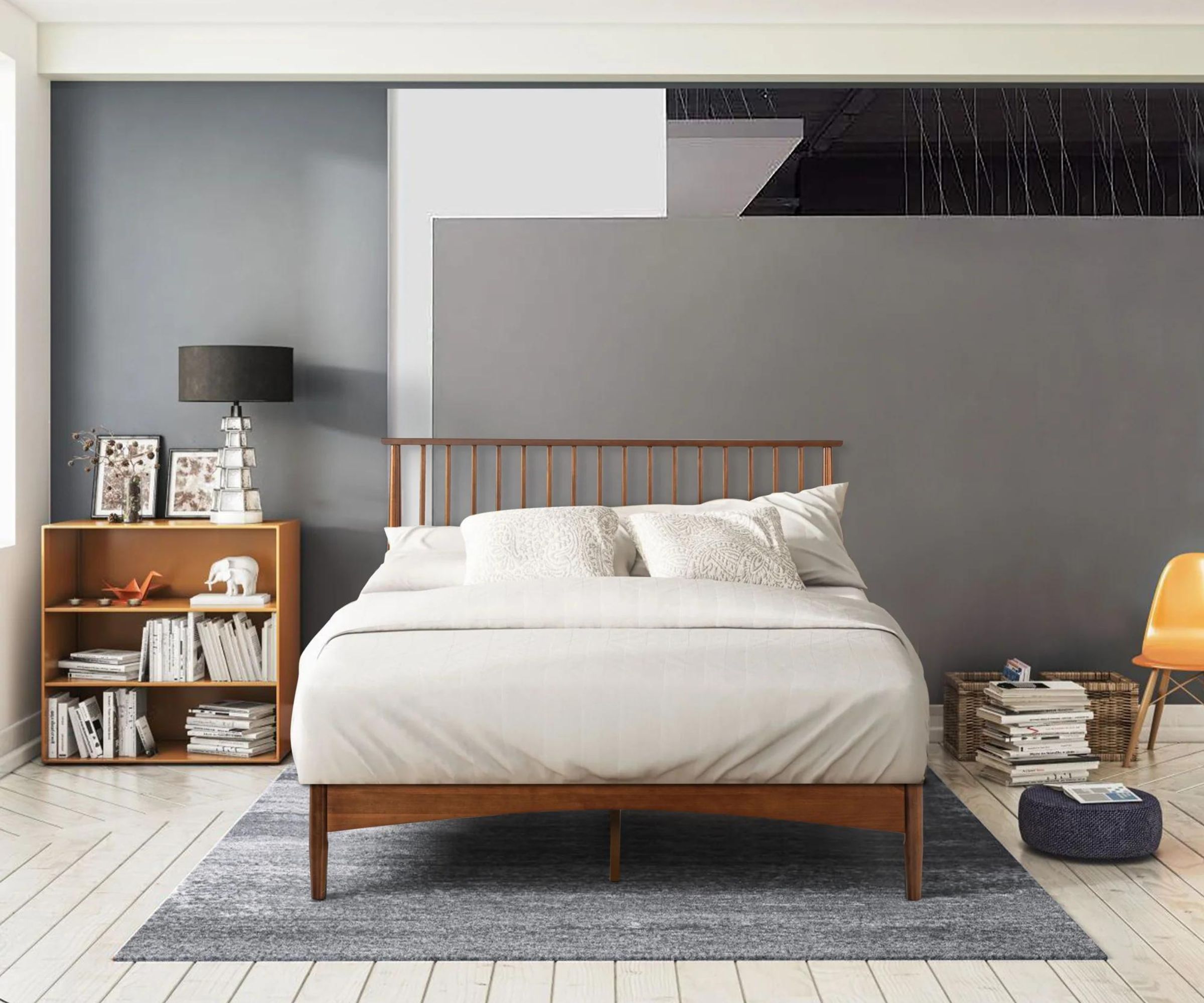
If you know you need a new bed frame, but you don't know where to start your search, then you're in luck: we've listed all the different bed frame types, along with their pros and cons, to help you find the frame that suits your needs.
Perhaps you've already narrowed your search and you're down to the final two frames. Our sleep experts are here to help you make the final decision. We've researched the support, firmness and durability of platform bed vs box spring foundations so that you don't have to.







